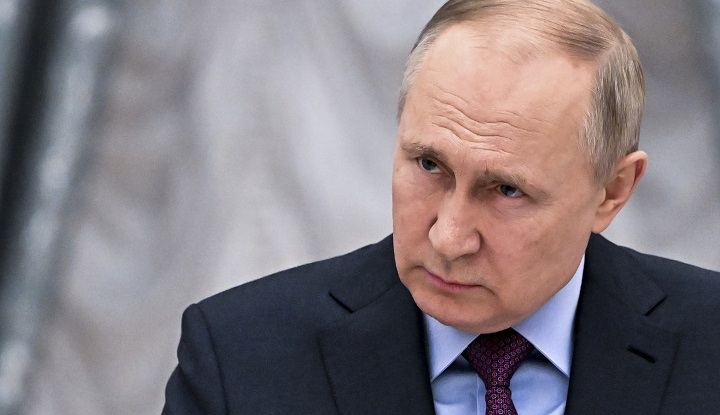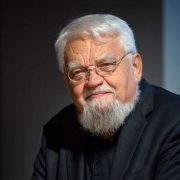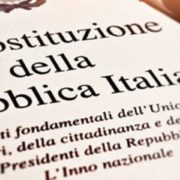
It is not yet a traditional invasion, but certainly with the deployment of forces, gunfire, missile launches, troop movements, stock market crashes, and price increases, we are already in the midst of an asymmetric war, typical of the 21st century.
Or better, it is the latest example of Alexander Goncharov’s hybrid war, the Russian general who could impose his model of conflict for the Second Cold War in Europe, just like trench warfare was typical of WWI, the lighting blitzkrieg tank advances were the hallmark of WWII and proxy hostilities made Cold War I.
Russian President Vladimir Putin continues his policy of tension, brinkmanship, by ordering his soldiers to enter the areas already disputed by the Russian-speaking independentists of Ukraine. Then so far, it’s a mini-invasion, and the rest of the armed forces deployment still seems to function as a threat.
In his speech, however, more broadly, the Russian president denies the political situation that arose after the collapse of the USSR. The states that have emerged have no such dignity: There is only Russia, a true nation with true history, which therefore must sooner or later reabsorb the other “little states” sprung from the soviet demise.
Without having any idea of his final intentions, his actions and words seem to seek an honorable way out to be presented internally. It is unclear when and how this will happen, if it will happen at all, but it certainly appears to be a crisis similar to Cuba, when Soviet leader Khrushchev challenged America in 1962, exactly 60 years ago, a whole cycle of the Chinese horoscope ago.
The predicament ended with a compromise but perhaps we also forget that around that time the rift with China also began and soon after Khrushchev fell.
Of course, historical similarities should be taken with a grain of salt. Khrushchev had been in power for a short time. Putin has been leading Moscow for more than two decades. The structure of the Soviet system was very different from the current Russian one. But similar to then is the consolidation or not of power in Moscow, then with a reformist agenda, now with a revanchist one. Moreover, ties with China have been recently reinforced, then Beijing had been agonizing for over a decade under what it considered a soviet yoke.
Yet Putin appears with his back against the wall and without any good solution in front of him.
It seems that he is actually acting to try to tear the net into which he has slipped. The alternatives to his present brinkmanship are worse: retreating without results is a snub, but invading is risky and involves social repercussions that have overthrown regimes in Moscow on other occasions, as we argued[1].
Putin is trying to show off his image as a strong man, playing up he is steamrolling western political weaklings and sowing divisions in western debate, claiming to be in each western country a better partner than their local enemy. Still for a way out, he needs an external side, but it is not easy because America does not trust him, right or wrong. Here the page turns to the United States.
The whole impasse is de facto a great unexpected gift to President Joseph Biden’s America, quite the opposite of the Cuban crisis 60 years ago that put then-President Kennedy in trouble.
In Europe, America is back as a political player and the political beacon for EU countries that believed Washington was superfluous in their continental affairs only a few weeks ago. NATO has risen from the grave. The American position in Asia has been strengthened by reassuring allies of its presence. China is warned that Russia is adventurist and the US is serious.
In America itself, awaiting the midterm elections, Biden is the man who finally, after more than twenty years of futile efforts, has managed to contain Putin.
Fortunately, by ingenuity or by a miscalculation of Putin himself, sleepy, polite, soft-spoken Biden appears as the answer that many in America and outside were waiting for, the iron fist in a velvet glove. Here, too, are the differences with Putin’s situation.
The Russian president has an interest in finding a way out as soon as possible, so he can then try to patch things up at home. Biden can “win” and show himself strong whether a solution is found sooner or later. Putin’s agitations only reinforce American centrality abroad and at home.
Even so, many want a solution, the devil as always is in the details. What could Putin possibly want to declare victory and have a weapon to fight for himself at home?
Perhaps stationing a few troops in the Donbas might be enough if it is truly accompanied by a troop withdrawal on the Ukrainian border. Of course, this will not eliminate the sanctions that the West will apply to Russia, the strengthening of NATO, or American consolidation in the world. But could it be enough for Putin?
The point here is not in Ukraine but back to the balances in Moscow. It is not clear how big and strong the opposition to the Russian president is in his structures and what he needs to feel safe. Indeed, Putin appears to be a lame-duck; it is unclear when he might stumble and what might happen in the stumble.
That is the biggest risk associated with the now clear fact that appeasement does not work with him: It simply encourages him to newer more fantastical demands. This could be further a sign of internal weakness. The collapse of the Stock Exchange in Moscow, the sanctions against the sale of Russian bonds, and the threat of seizures of the assets and accounts of Russian oligarchs abroad put the interests of the Putin aristocracy objectively against those of Putin.
The two interests can only weld together if the aristocracy believes that the interests will fuse in the near future and the Putin bet will pay off with interest. But this prospect looks increasingly shaky as the anti-Russian front on the Atlantic grows stronger.
Therefore, it is necessary to keep one’s nerve and monitor the situation minute by minute. In this, America has another advantage. It has clearly seen the real situation between Russia and Ukraine from the beginning, unlike Germany and France, which had deluded themselves that they could contain Putin with concessions or they were forced to by ill-conceived energy policies. They gave great leverage to Moscow, which used it callously.
For some key European countries, it is a turning point. For the past three decades, Germany drove its policy by thinking it could be some kind of greater Switzerland guided by geoeconomics and political neutrality. France sought its national interests even at the cost of friction with allies, pretending to be a superpower, and being heard. Italy simply gave up on foreign politics selling itself to the highest bidder of the day. These ideas might be selfish but could work. Yet, they all needed that no one and particularly Russia didn’t infringe their overall political security. This happened with Ukraine, as Putin is forcing his way westwards by trying to force an independent country back into a soviet-style mold.
Furthermore, there is an inter-European consequence. The countries of the “new” EU (Poland, the Baltics, and Romania) were more lucidly afraid of Russian moves from the beginning. Such assessments turned out to be accurate. Of course, these countries do not have the economic strength of the “old” EU, but the right political evaluation could give them more influence soon.
All in all, this creates a new political “subordination” in Europe with the United States. European leaders didn’t understand what the global situation was, they erred in their assessment by keeping trusting Putin’s promises. Conversely, America was far more cautious and thus it returns to being central to what is most valuable: understanding the reality of things.
Regardless of the solution to the current clutter, the ability to see things for what they are, in a world covered in propaganda and wishful thinking that takes precedence over the assessment of reality, is most precious, the one true holy ring.
[1] See http://www.settimananews.it/informazione-internazionale/losing-putin/#comments






With more reason than US has to resent the presence of independent Cuba a short distance from its coast Russia resents the effort of US to maintain Ukraine as a satellite bordering Russia. After the coup of 2014 Oekraine, Russia, Germany and France reached the Minsk II agreement that was confirmed by a unanimous vote in the UN Security Council. According to the agreement Ukraine would change its laws to end discrimination against Russian speaking citizens and grant a measure of autonomy to the provinces of Luhansk and Donetsk before the end of 2015. Then Ukraine refused to execute the agreement and now complains that Russia violated it.
The US sponsored regime is responsible for the shooting down of the MH17 airliner in July 2014. As a member of the Joint Investigation Team it was able to introduce a vast amount of evidence against the rebels and when the Buk launcher in the hands of the rebels was shown to be unable to launch any missile against Russia. Four men, three Ukrainians and a Russian are now being prosecuted in absentia in a trial in the Neverlands for being concerned in introducing a Russian Buk launcher which shot down the airliner. However the manufacturers of the evidence were apparently unaware of how the war was fought at the time, according to details publish in Dutch a newspaper, giving the defender of the Russian accused, which is retained by Russia, to demolish the accusations when at last his time has come to speak.
Scisi is completely wrong. The real question is, who is the monkey dancing to the tune of a musician from the beginning of this crisis? Certainly not Putin the “Genius”. Knowing China sufficiently well, it is odd Sischi never mentions Sino-Russian factor.
Come sempre un’analisi molto lucida e calzante.
La vera sconfitta è l’EU, nano politico, che se non risolverà la questione avrà questo ulteriore peso al collo del suo futuro.
PS Non ho trovato nulla sul generale Goncharov, mi darebbe gentilmente qualche riferimento.
Un caro saluto